As you may already know, Offline Files is a special feature of Windows that allows you to access files stored on a network share locally, even when you are not connected to that network. In modern Windows version, it includes a special "Always Offline" mode, that saves your bandwidth by syncing files between your PC and the appropriate network share periodically.
Advertisеment
To review and manage your offline files, you can use a special Control Panel applet, Sync Center. The Offline Files feature is part of the Sync Center app.
To manage offline files, you need to perform the following steps.
- Open the classic Control Panel app.
- Switch its view to either "Large icons" or "Small icons" as shown below.
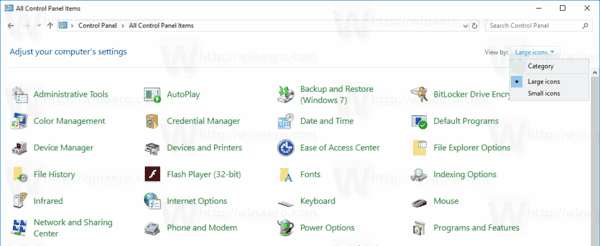
- Find the Sync Center icon.

- Open Sync Center and click on the link Manage offline files on the left.
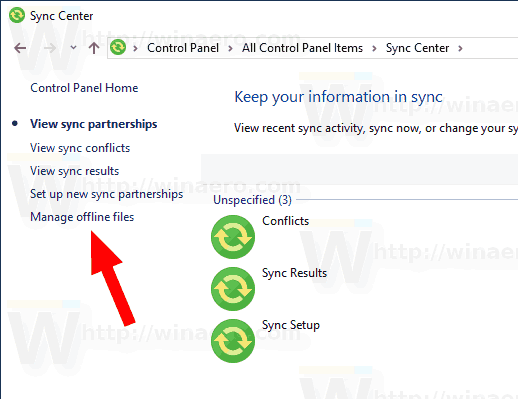
- Click on the View your offline files button.
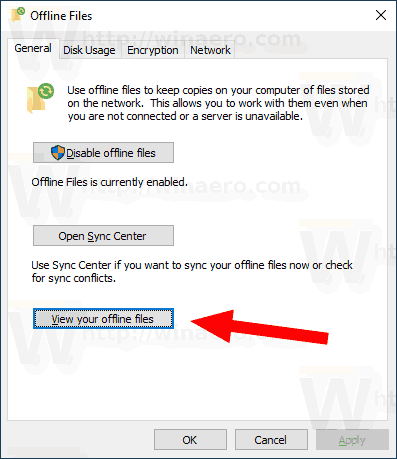
This will open the Offline Files folder.

It is quite a long procedure. To save your time, you can create a special shortcut to open the Offline Files folder directly, with one click.
To create the Offline Files Folder shortcut in Windows 10, do the following.
- Open the Offline Files folder as described above.
- Click and hold the left mouse button on the folder icon in the address bar.
- Drag it to the Desktop.
- The shortcut is now created.
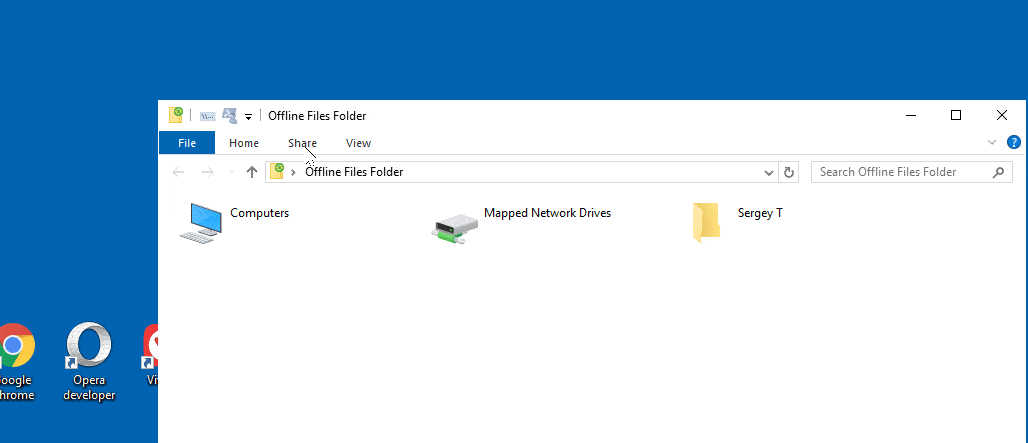
Alternatively, you can create the same shortcut manually by using a special command as the shortcut's target.
Manually Create Offline Files Folder Shortcut
- Right click the empty space on your Desktop. Select New - Shortcut from the context menu (see the screenshot).
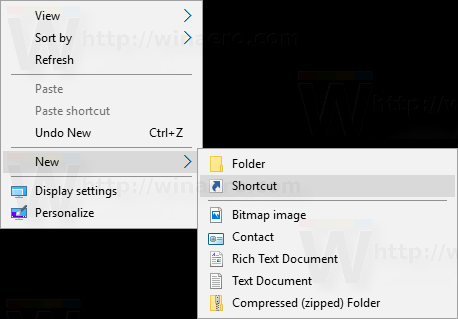
- In the shortcut target box, type or copy-paste the following:
explorer.exe shell:::{AFDB1F70-2A4C-11d2-9039-00C04F8EEB3E}See the following screenshot:
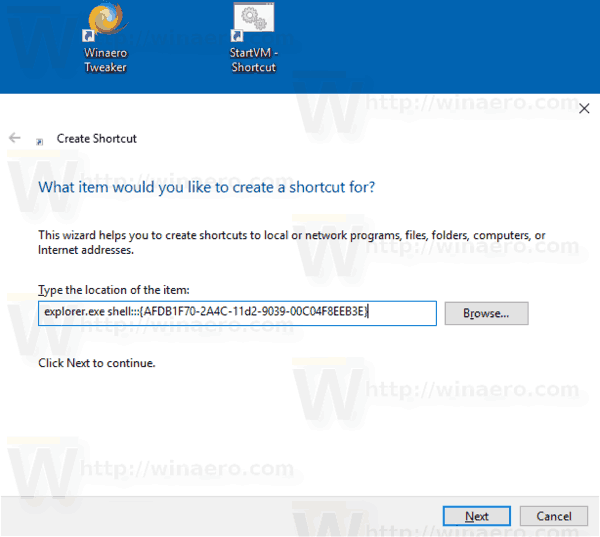
- Use the line "Offline Files Folder" without quotes as the name of the shortcut. Actually, you can use any name you want. Click on the Finish button when done.
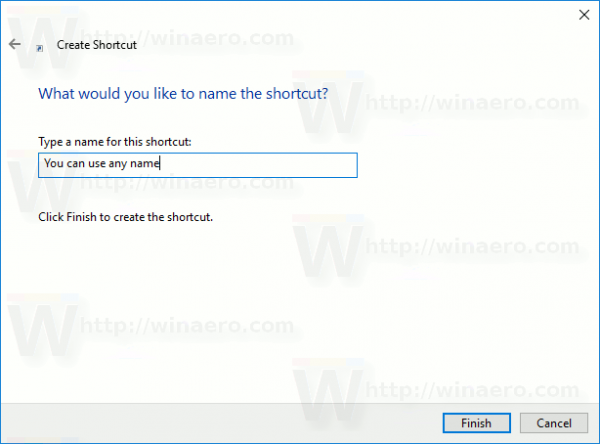
- Now, right click the shortcut you created and select Properties.
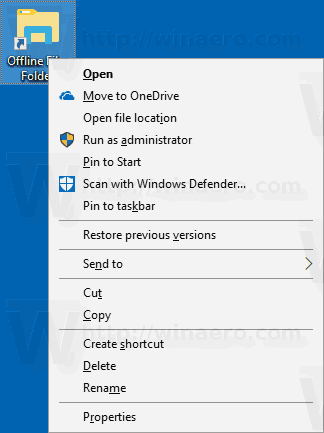
- On the Shortcut tab, you can specify a new icon if you wish. The suitable icon can be found in the
%SystemRoot%\system32\cscui.dllfile. Click OK to apply the icon, then click OK to close the shortcut properties dialog window.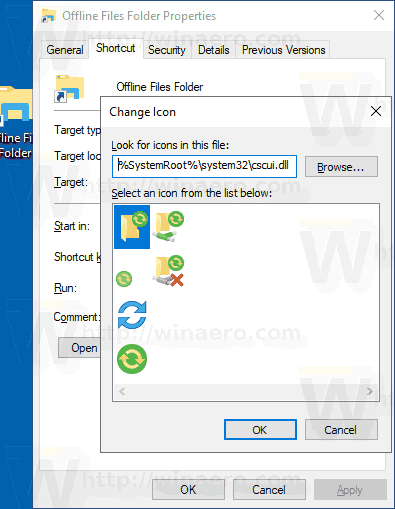
Now, you can move this shortcut to any convenient location, pin it to taskbar or to Start, add to All apps or add to Quick Launch (see how to enable Quick Launch). You can also assign a global hotkey to your shortcut.

The command used for the shortcut is a special shell:command which allows opening various Control Panel applets and system folders directly. To learn more about shell: commands available in Windows 10, refer to the following article:
The list of shell commands in Windows 10
That's it.
Related articles:
Support us
Winaero greatly relies on your support. You can help the site keep bringing you interesting and useful content and software by using these options:
